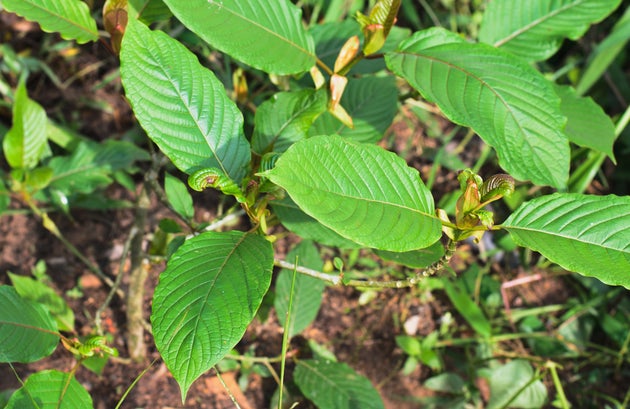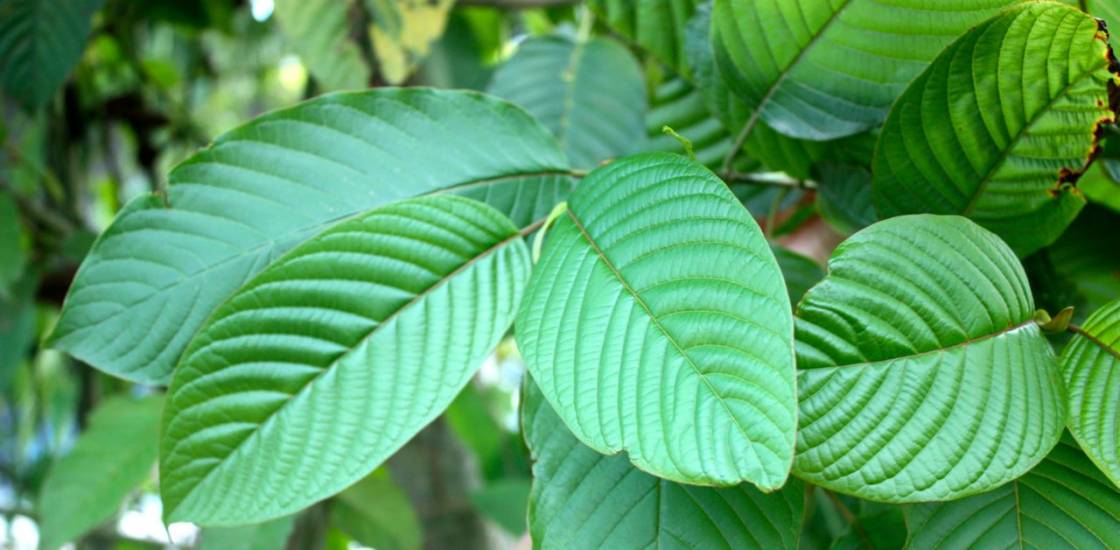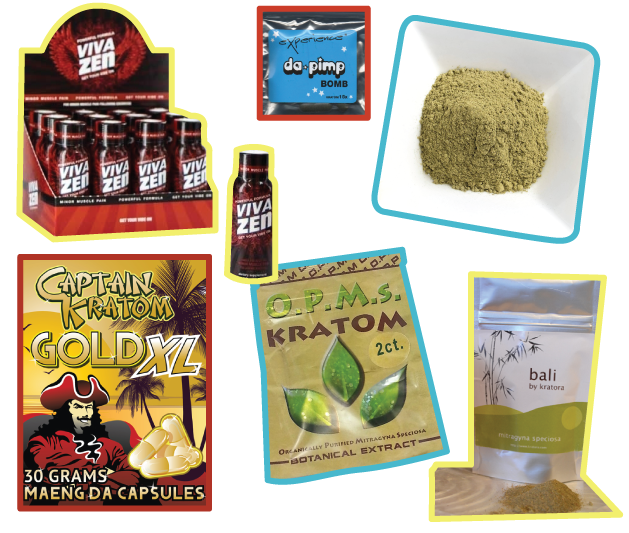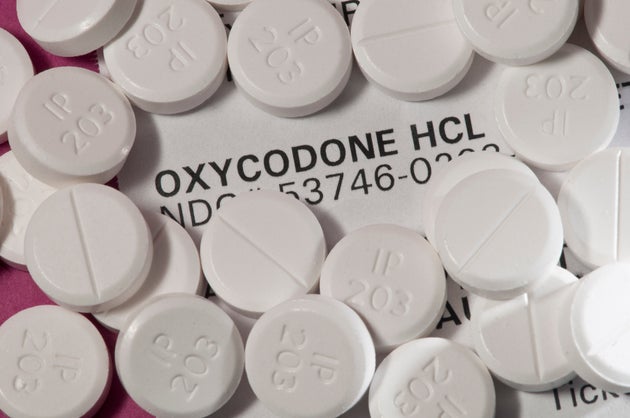Some Say Kratom Is A Solution To Opioid Addiction. Not If Drug Warriors Ban It First.
Prohibition is a short-sighted, ineffective policy, but that’s not standing in their way.

America’s drug war is changing. Marijuana, long demonized without evidence as one of the world’s most dangerous drugs, is now legal, at least for medical use, in 23 states and Washington, D.C. The president has said that treatment — not incarceration — is the best way to combat the opioid addiction epidemic.
But even as the nation comes to terms with the overwhelming failures of the drug war, lawmakers around the country are pushing to open a new front.
Right now, politicians in at least six states are pushing to ban kratom, an herbal drug made from the leaves of Mitragyna speciosa, a Southeast Asian tree. The natural substance, usually consumed as a tea or powder extract, contains mitragynine and a related compound, 7-hydroxymitragynine, which appear to activate opioid receptors in the brain and reduce pain. While most opioids have sedative qualities, low to moderate doses of kratom serve as a mild stimulant.
As kratom gets a modern makeover, popping up in new products like energy shots and bright, gaudy packages sold in headshops, the Food and Drug Administration and Drug Enforcement Administration are raising concerns about it.
State lawmakers, encouraged by sensationalist news stories and isolated reports of abuse, are treating it like a dangerous recreational substance that must be outlawed. Kratom bans are already in place in Indiana, Tennessee, Wisconsin, Vermont and most recently, Arkansas. Legislation is now pending in Alabama, Florida, Kentucky, New Hampshire, New Jersey and New York, with more states jumping aboard the effort each session. People involved in abstinence-only drug rehab have spoken out against kratom, arguing that the drug is easy to abuse and can interfere with recovery from opioid addiction.
Despite the crackdown, there isn’t a scientific consensus on kratom’s full range of potential benefits and dangers. People in Southeast Asia have been using kratom for centuries, if not longer, and thousands of Americans now tout it as a promising therapy for opiate withdrawal and an alternative to certain prescription drugs, including narcotic painkillers. But if the drug warriors get their way, none of that will matter — and kratom will be illegal.
Susan Ash’s path to kratom began around a decade ago in an old-growth forest in Oregon. Ash, then in her mid-30s, was working on a conservation project that often took her on treks through the towering redwoods, Douglas firs and Sitka spruce.
When she started feeling intense joint pain and debilitating fatigue, Ash didn’t think to consider Lyme disease. Nor did any of the many doctors she saw over the next few years. Though they couldn’t make an accurate diagnosis, the doctors did what they could to treat Ash’s worsening symptoms. That meant prescription drugs — and lots of them.
“I was on every controlled substance under the sun,” Ash said.
Doctors were soon prescribing her pills just to treat the side effects of her other medications.
“I was on morphine, and because of the morphine, it was making me so fatigued that I wasn’t able to keep my job at the time, and so they put me on Adderall so that I could perform my work,” Ash said. “With the Adderall, my previous struggles with depression and anxiety got worse. They added on the Xanax. At one point I was on all three — the benzodiazepines, the narcotics and the stimulants — in addition to Seroquel [an antidepressant sometimes used for sleep], Lyrica [a pain medication used to treat fibromyalgia], Flexeril, a muscle relaxant.”
“I could go on,” Ash continued.
Despite being prescribed a cocktail of as many as 10 different pills, Ash’s condition only deteriorated. In 2010, after years of suffering, she began experiencing temporary paralysis and disturbing neurological effects. She was getting lost in her own neighborhood. She’d sometimes wake up unable to move her limbs until someone could pry them out of their torpor.
Finally, a pain specialist asked Ash if she’d been checked for Lyme. The test came back positive, and she began a 10-month course of antibiotics, pumped through a port installed in her chest.
But while Ash’s Lyme disease symptoms began to subside, the years-long regimen of increasingly powerful painkillers had awakened another disease. As Ash’s opioid tolerance grew, so did the strength of the drugs doctors prescribed her, and by 2011, she says she was addicted to pain pills.
Millions of Americans caught in the nation’s surging opioid epidemic have followed a similar trajectory. In 2013, doctors wrote nearly 207 million prescriptions for narcotic painkillers, up from around 76 million in 1991, according to the National Institute on Drug Abuse. Much of this was due to the pharmaceutical industry’s lobbying and PR campaign, led by Purdue Pharmaceutical, to boost the use of narcotics. (Purdue would ultimately plead guilty to misleading the public about the addiction risk posed by the painkiller OxyContin, and pay a $634.5 million fine.)
The United States is far and away the largest global consumer of these drugs, making up almost 100 percent of the world total for consumption of hydrocodone (also known as Vicodin) and 81 percent for oxycodone (also known as Percocet) in 2013 — all of which brings in billions of dollars for the pharmaceutical companies that manufacture the pills.
In some cases, dependence on prescription opioids for pain management leads to something more harmful. In 2014, 1.9 million Americans ages 12 or older had a substance use disorder involving prescription pain relievers, according to the American Society of Addiction Medicine. More than 18,000 people died after overdosing on prescription opioids that year. Another 10,574 died of heroin overdoses, a death toll that has continued to spike as people who get cut off from narcotic painkillers turn to harder, cheaper and easier-to-access drugs.
But like many people who get addicted, Ash wasn’t aware of her problem. She had a legitimate need for the pills, and didn’t realize what they were doing to her until it was too late.
“My family would look back on how I was then and say I was living my life with morphine glasses on,” said Ash. “I was not caring about my actual living environment. It was dirty and nasty and I wasn’t cleaning it up, and I didn’t even notice.”
Ash entered treatment in 2011. She successfully detoxed, and for a number of years continued in recovery with the help of buprenorphine, a medication used to treat opioid addiction. It worked, Ash says, but she still felt chained to pills, as if she couldn’t live free from narcotics. That’s when Ash discovered kratom, first as a way to help deal with the symptoms of withdrawal, and then as a replacement for other medications.
“Life couldn’t have been much worse at that point. I was not leaving the house at all. I was only leaving the house to see doctors,” she said. “In a matter of two weeks, I had the energy, I had the pain relief and I had the depression and anxiety relief I needed to become a productive member of society again. It was such a stark difference and such an immediate change in my life.”
Uncle Sam vs. Kratom
Kratom has long been known as an effective way to alleviate opiate withdrawals. In the 1940s, the Thai government banned it in what some historians believe was an effort to eliminate a threat to opium, which was bringing in substantial tax revenue at the time. Without an alternative drug or legal means to combat withdrawals, many users were likely driven back into opium dens, where the state could benefit financially from their addiction.
The U.S. government hasn’t gone that far — yet. Kratom is on the DEA’s list of “drugs of concern,” which means federal drug warriors are eyeing a more heavy-handed approach. The FDA has also identified kratom as a botanical substance that could pose a risk to public health and could potentially be abused, which has prompted large-scale seizures at the agency’s behest.
Much of this anxiety has been driven by fatalities supposedly linked to kratom. But in almost all of the cited cases, toxicology reports showed that kratom users who died also showed signs of polydrug abuse or pre-existing health conditions. In a number of instances, they appeared to have taken deceptively marketed products that contained not only kratom, but more dangerous synthetic drugs — a concern for people on either side of the kratom issue.
Is It Really Dangerous?
But focusing on reports like these mischaracterizes the potential risks of the plant, says Walter C. Prozialeck, a professor of pharmacology at Midwestern University who wrote a comprehensive literature review on kratom for the Journal of the American Osteopathic Association.
“After researching the literature, I found that were more positive aspects to kratom than there were negative,” he said. “Additional studies are needed to explore potential benefits of kratom. Also, work is needed to look at toxicity, though. How would kratom interact with prescription drugs or nutritional supplements that a person might be using?”
Prozialeck described kratom itself as largely benign, and said it doesn’t produce much in the way of psychoactive high in low-to-moderate doses. That means it doesn’t have a particularly high potential for recreational use.
“With anything, there are dangers of using too much,” Prozialeck said. “But the amount that a person has to take in to get any severe effects is ridiculously high. You’re talking 10 to 15 grams of raw leaf. Most people who are using kratom for pain management don’t take that much. Most people can’t take that much.”
In online forums like Erowid and Sage Wisdom, users report that higher doses lead to sedative effects, and that taking too much kratom can cause gastrointestinal issues — stomach pain, nausea and vomiting. This isn’t fun, most of them suggest, and it’s certainly a stupid way to use any drug.
Others say kratom must be banned because its promise as a therapy that relies on a less harmful opioid substitute is complicating the addiction recovery process. But the loudest critics have so far been the ones who believe abstinence is the only way to overcome addiction, a position that has come under intense scientific scrutiny in recent years.
In January, The New York Times reported on a Florida woman who’d turned to kratom during her time in a recovery facility for heroin addiction. She was getting regular drug tests, and said she began buying kratom beverages at a kava bar — an establishment that sells a variety of mildly intoxicating drinks, often at an obscene markup — because it didn’t interfere with her screening. She eventually got addicted, she said, and spent hundreds of dollars a week before eventually returning to heroin. The woman said kratom was “causing a lot of relapses” among people who are addicted. The article concluded that the plant was essentially analogous to other opiates, and in some cases, equally as risky.
That thinking isn’t uncommon.
Gloria Anderson, supervisor of addiction programming at the Hazelden Betty Ford Clinic, a 12-step facility in New York City, recently told TV station PIX11 that 20 percent of her patients reported using the drug as “a Band-Aid when they are unable to get ahold of opiates such as painkillers and heroin.”
Anderson and others argue that lawmakers should respond by making kratom a Schedule I substance alongside heroin itself, classifying it as one of the most dangerous drugs with “no currently accepted medical use and a high potential for abuse.”
“After researching the literature, I found that were more positive aspects to kratom than there were negative.”Walter C. Prozialeck, professor of pharmacology at Midwestern University.
Initial studies have suggested kratom does have some addictive potential. And this is perhaps more likely to be true among people who have existing opioid abuse disorders and who may be in mandatory, abstinence-only drug treatment, where they may be going through painful withdrawals without the help of medication.
All of this speaks to the need for better education on kratom to encourage responsible use and minimize potential harm.
Considering the research he’s reviewed, however, Prozialeck says it’s a stretch to compare kratom to heroin and other opiates.
“I would respectfully disagree with the idea that kratom poses as much risk as other opiates,” he said. “I think kratom is probably less dangerous in terms of long-term dependence and addiction. People who turn to kratom are probably desperate for an alternative.”
Jag Davies, director of communications strategy at the Drug Policy Alliance, says he’s skeptical of the desire to ban kratom. He sees it as a function of the “treatment industrial complex,” which he says is profiting from treatment-instead-of-incarceration policies that funnel clients from the criminal justice system into programs that aren’t based on science, such as abstinence-only and 12-step. Davies said there’s a better way to approach the problem.
“A health-centered approach to drug use assesses improvement by many measures, not simply by someone’s drug use level, but also by their overall health, their employment status, their social relationships and their general well-being,” said Davies. “Determining success by boiling it down to this single measure of abstinence to this arbitrary group of certain drugs isn’t realistic or effective.”
If we were more willing to judge the success of treatment and recovery by other metrics, Davies says, people wouldn’t be so dismissive of the idea that a recovering addict could use kratom and be a productive member of society, while causing less harm to themselves than they did with heroin. In fact, from a treatment provider’s perspective, that should be seen as a victory.
Where Are We Headed?
But that would appear to be asking a lot in the current debate over kratom.
In Florida, a bill to ban kratom advanced through an initial committee vote last month, despite opposition from some members.
“They provided zero reasons for supporting it,” state Sen. Jeff Brandes (R) said of the legislation’s supporters. “Honestly, this was the least intellectual rigor I have seen in the Florida legislature — on this bill and on banning a product. There was literally zero testimony as to why this product should have been banned.”
Brandes voted against the bill, but he’s not so sure his colleagues will view the effort with the same skepticism as it progresses through the state Senate.
“It shows the utter conflict in drug policy,” he said. “I think it’s just a knee-jerk reaction to someone saying, ‘Oh, this is dangerous,’ but then providing no data to support their position.”
The stakes are high for advocates of kratom, and they’re now working to combat the sensationalism and misinformation that has historically dominated political debates about drugs.
Big Kratom Fights Back
In 2014, Ash formed the American Kratom Association, a trade group that now has hundreds of dues-paying members and around 2,500 active contributors who share their experiences with kratom in an online forum. The AKA recently announced that Paul Pelosi Jr., son of House Minority Leader Nancy Pelosi (D-Calif.), would serve as the group’s executive director.
Advocates have been busy trying to convince lawmakers that banning kratom would deprive the public of a promising treatment that has already helped many people who struggle not just with opioid addiction, but with other ailments treated with heavier prescription drugs. And while Ash says kratom has worked for her and thousands of others, she adds that the drug affects everybody differently. As with any drug, prospective users should approach it with caution.
There are also some legitimate concerns surrounding kratom, Ash admits, but points out they tend to get lost in the hysteria of total ban legislation. There is plenty of room, she says, for further regulation of kratom to ensure proper consumer protections are in place.
Much of the bad press has revolved around unscrupulous manufacturers that have sold adulterated products, or have marketed their products deceptively, leading to confusion about what kratom actually is. It doesn’t help that it’s regularly found in head shops, alongside shady synthetic drugs that have attracted their own share of negative headlines, in many cases for good reason.
“The industry needs to come together to self-regulate and self-police one another and get rid of some of the bad apples out there,” said Ash.
The AKA supports placing an age restriction on kratom for consumers who are 18 or older. The organization also believes that stricter labeling guidelines are necessary. Women who are pregnant or breastfeeding shouldn’t use kratom, for example, and anyone with a medical condition or who is taking prescription medications should consult their doctor before trying kratom. Perhaps most importantly, the AKA wants to make sure that products aren’t being deliberately marketed toward younger consumers, or with the intent of comparing its effects to other drugs, like actual opiates.
Ash says that although she hopes the FDA will stop cracking down on kratom, she doesn’t see a path toward more mainstream medical acceptance. Clinical testing and FDA trials require huge financial investments, and considering the product in question is a plant that’s likely been around for millions of years, pharmaceutical companies wouldn’t see any way to make money from it. In fact, broader use of the plant as an alternative treatment would presumably take away from their bottom line.
But the pharmaceutical industry does factor in to what the AKA says are its broader hopes that it can help foster a smarter, more robust approach to treating addiction, chronic pain and other conditions that currently leave people with few options beyond prescription drugs. The organization would like to see better programs to manage and monitor the prescribing of opioids, while ensuring they’re accessible to those who need them, says Ash. The AKA also believes lawmakers need to invest more resources into recovery and reduce reliance on abstinence-only programs that, according to Ash, have shown “a dismal success rate.”
“Rather than put all of this effort and sensational attention onto this plant that could be part of the solution, why not focus on making better programs and evidence-based programs on recovery and putting more attention on mental health and addiction,” she said.
That may sound like common sense to the growing number of people who believe in a health-based approach to drug policy. But the campaign to ban kratom — which has shown therapeutic promise, but would benefit from further scientific research — shows we still have a ways to go in order to truly reorient the political conversation around drugs.
“We’re at a really contradictory moment in drug policy in some ways, where there seems to be this consensus for a new approach, but then at the same time, there’s still these knee-jerk, punitive responses whenever a new drug comes up,” said Davies, of the Drug Policy Alliance. “People are very easily fooled by new drugs, and it’s still very easy to push through bad legislation.”
http://www.huffingtonpost.com/entry/kratom-ban-drug-policy_us_56c38a87e4b0c3c55052ee3f









